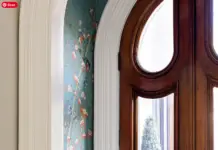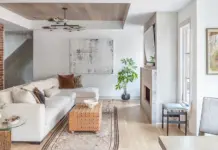A Beginner’s Guide to Woodworking Projects

Items made of solid wood have an undeniable appeal. They’re solid, have a great feel and each has a unique pattern only nature could provide. The ability to find a design and make the item yourself from start to finish provides a satisfaction that can last a lifetime. Woodworking does not require a workshop larger than your first apartment or a Bugatti-and-caviar budget. Building wood projects yourself has advantages and is a lot of fun. It requires only a modest budget for a few basic tools to get started. Some great practical starter projects are suggested below.
Benefits of DIY Woodworking

Making it yourself has several advantages. First, you can customize what you’re building. Rather than search for the exact size, color and features you want, find a plan and create it. By making it, the choice of material, finish and size is in your control. A second reason is cost. Even if you could find everything you want available for purchase, you may pay a premium for it. Making it yourself, especially when working with all-wood projects, is frequently far less expensive. A third reason is that creating items can be mentally stimulating. Using math, doing 3-D spatial visualization and following detailed directions engages the left side of your brain while the creativity of finishing a piece and improvising when necessary engages the right side. Woodworking uses both sides, so whichever side of the brain you normally use, most woodworking is part comfort zone and part experience in new terrain.
Tools to Get Started
A few basic tools will be required to get started. It does not have to cost too much at first. As you take on more challenging projects, you can upgrade some of the hand tools to power tools.
- Power drill. It’s worth spending money on a drill that gives not only good power but options for attachments. Some come with an impact driver, which can drive a screw without a pre-drilled hole. A variety of drill bits, including a countersink bit, screwdriver bits and paddle bits will come in handy. A pocket-hole jig to create angled holes is useful for many jobs. If you are working with a lot of metal, don’t settle for anything less than precise reamers and reaming tools. They can help you achieve the precision you need for installation pieces. You can also get the exact contour or smoothness of the metal you envision with the right tools. Therefore, you can be sure that everything fits perfectly in whatever home DIY project you embark on.
- Miter saw. A miter saw helps get straight or angled cuts exactly right every time and you will be surprised how often you use it. A compound miter saw does beveled cuts and a sliding variation will cut wider pieces of wood, so anticipate your needs, space and budget when buying. Check this great article about miter saws on WoodworkBoss.com
- Circular or jig saw. According to SawsHub, a circular saw is the ideal tool for long lengths of wood, which the miter saw is unable to do. A jig saw is light and flexible and best for cutting shapes.
- Electric woodworking router. A router can be fit with a variety of bits and put to several uses. Its most common use is to round the sharp edges from a board. It can also add decorative effects to trim pieces or carve grooves to create joints where boards meet. You may be able to put off the router if you pick up a hand planer for rounding edges.
- Hand tools. An assortment of basic hand tools to have on hand would include a hammer and counterpunch, wood rasp and chisel set, sanding blocks and a variety of clamps.
- Safety equipment. Basic safety equipment to stock would include safety glasses, masks to avoid inhaling sawdust and ear protection

Suggested Starting Projects
Finding plans for projects is easy. Hundreds are available for free online or in library books and those TV shows with the giant workshops often offer their plans at the end of the show. Below is a list of woodworking projects perfect for a beginner that rely on basic tools. Accessories: A variety of easy-to-make home accessories are available that will be practical and help you get to know your tools.
- These hanging shoe racks use premade dowels and can be placed in out-of-the-way spots.
- This sectioned tray is designed for office use, but could find dozens of uses.
- This super-easy cutting board uses a variety of woods for a striking effect, although it requires a power sander or planer.

Storage: Everyone can use more storage options and shelves are a good first project.
- These standing shelves could be built in multiples to fill a space.
- These sturdy floating wall shelves are good to tuck into a small space.

Tables: Tables offer a variety of uses, indoors, outdoors and in the workshop. Here are three inexpensive designs that are easy to build and can be used in a number of ways:
- Small indoor/outdoor end tables.
- A larger coffee table.
- A corner media center with storage.

Garden planters: Outdoor garden items make good starter projects because they’re often simple to make and there’s less perfection expected for items that are going outdoors. The last two projects call for expensive cedar because it is naturally weather-resistant, but a less expensive wood could be substituted and coated with an outdoor paint, especially if the plants are going to be in individual pots.
- These super-simple plant stands create a designer look for a few bucks.
- This free-standing tiered planter could also be used for garage or kitchen storage.
- This window box would add instant curb appeal.
At the end of a woodworking project, you have a customized item ready for use, but that’s not all. You also have additional skills that have prepared you to tackle your next project. Thanks to Woodworkboss.com for contributing!
























